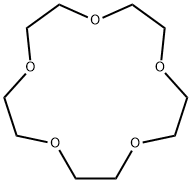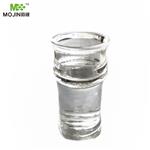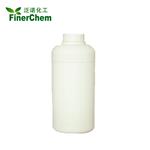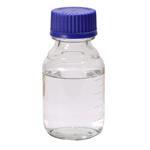use
15-crown-5 has also been used to isolate salts of oxonium ions. For example, from a solution of tetrachloroauric acid, the oxonium ion [H7O3]+ has been isolated as the salt [(H7O3)(15-crown-5)2][AuCl4].
Introduction
The single nitrogen-containing derivative of 15-crown-5 is called aza-15-crown-5; the prefix “mono” is unnecessary. When two or more nitrogen atoms are present, the standard prefixes di-, tri-, etc. are applied. The term “monoazacrowns” is used here to designate the class of macrocycles containing a single nitrogen in combination with oxygen atoms as the macrocyclic donor array.
Chemical Properties
colourless liquid
Uses
15-Crown-5 is used as an efficient phase transfer catalyst and as a complexing agent. It is used to isolate oxonium ion (H7O3)+ salts especially from a solution of tetrchloroauric acid. It catalyzes the O-alkylation of the sodium salts of carboxylic acids in the penicillin and cephalosporin series, thereby facilitating esterification reaction without usage of acid. It is also used to facilitate the Williamson synthesis of ethers with hindered alcohols and sodium hydride. It is used with lithium aluminum hydride, for performing reduction reactions in hydrocarbon solvents. Further, it is involved in the Horner-Wadsworth-Emmons reaction to prepare stilbenes from aldehydes.
Definition
ChEBI: A saturated organic heteromonocyclic parent that is cyclopentadecane in which the carbon atoms at positions 1, 4, 7, 10 and 13 have been replaced by oxygen atoms to give a crown ether.
General Description
15-Crown-5 is a crown ether generally used as a ligand in coordination chemistry because of its strong chelating property with certain alkali cations to form complexes. Some derivatives of 15-crown-5 are used as sensors and probes in different physical-chemical processes, phase-transfer reactions, and selective capture of ions for separation and transport.
Safety Profile
Moderately toxic by ingestion, skin contact, and intraperitoneal routes. A skin and eye . When heated to decomposition it emits acrid smoke and irritating fumes
Purification Methods
Dry it over 3A molecular sieves and distil it in a high vacuum. [Beilstein 19/12 V 252.]




